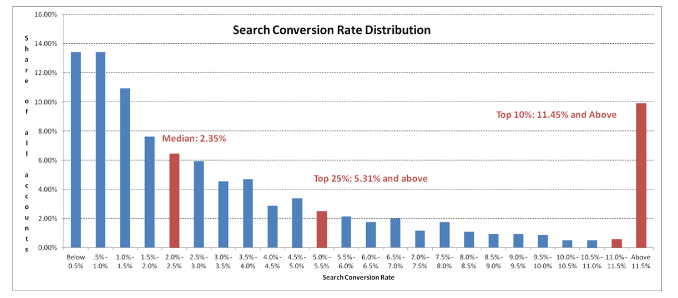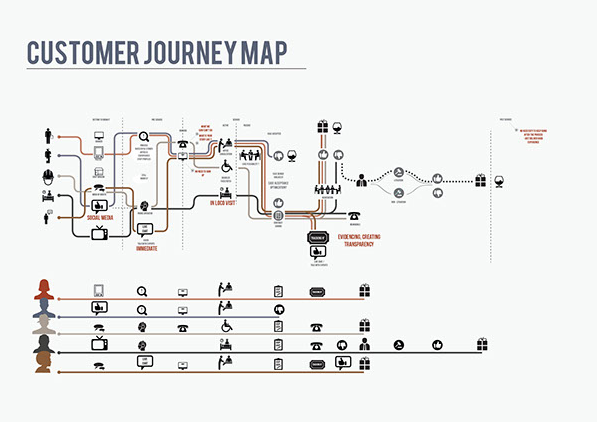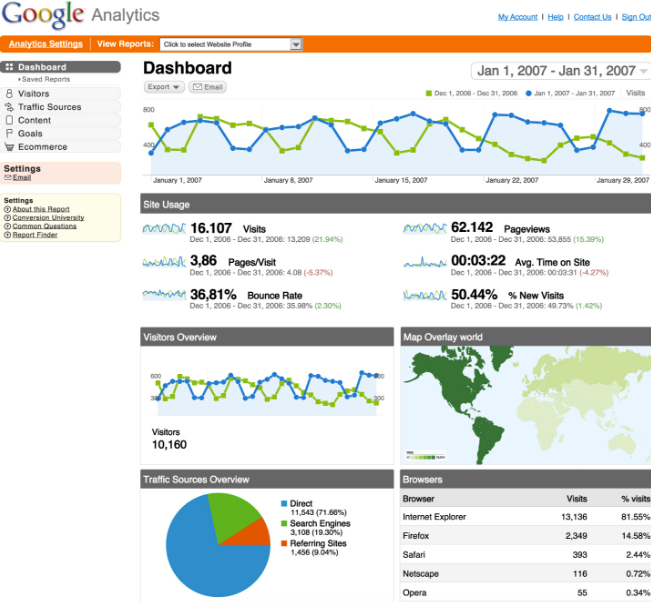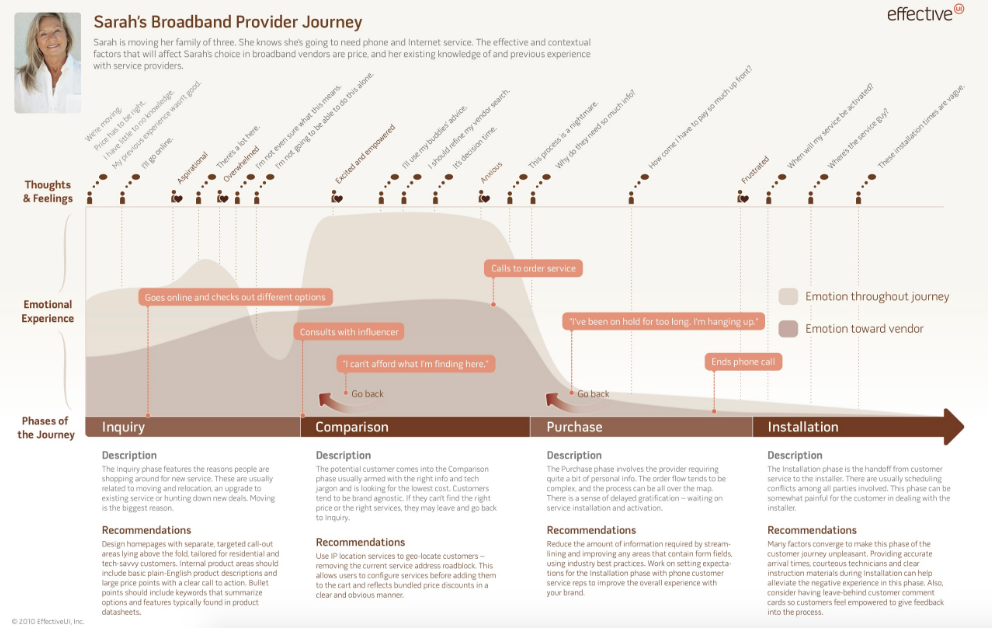
Take a Stroll Down the Customer’s Journey
TAKE A STROLL DOWN THE CUSTOMER’S JOURNEY
Recent studies done by Word Stream show that the average conversion rate for pay-per-click advertisers is 2.35%, which is about the same chance some have of becoming a millionaire.
What happens between the click and the customer being converted or not? What sort of journey does the customer go through, and how can companies make sure that each customer stays on the path to a purchase?
If marketers zoom out and take a look at what a potential customer’s journey might look like, they can fill in the gaps between what a customer wants that experience to be and what kind of experience you would like to give them.
Visually mapping that journey, gathering all of the data points, the analytics, the emotions, and strategies involved is one of the best ways marketers can begin to understand their customer.
We spoke with two Houston marketing experts to get some insights on how they are using the customer journey map to help their clients.

But What Exactly is a Customer Journey Map?
It’s easy to get lost in marketing and advertising jargon, but the core of what a customer journey map is really quite simple. It tells the story of what a company’s customer would go through to buy their product or service, or whatever the company’s particular end goal is.
The journey a customer goes through could lead down a hundred different paths. A map could focus on the web journey, an experience at a traditional brick-and-mortar store, a call experience, or the map could encompass every route. More touchpoints mean a more complicated map, but it is the important or key ones that are crucial to get down.

The experience a customer has with a company is already on its way to overtaking importance in price and product, and according to a recent report, by 2020 it will have succeeded. Experience will be 16% more important than price.
Beau Pedraza, the SEO Lead at Forthea, a Houston-based internet marketing company, agrees.
The ultimate goal is not just to satisfy the end goal by having a customer purchase a product, or engage with a call to action. It’s to make it easy and intuitive for anybody to reach that end goal and then come back because we made their experience easy and seamless. There’s the human side of it that I think a lot of people in marketing, especially digital marketing, forget about.
With two-thirds of customers willing to spend more with a company that they believe has better customer service, it is definitely worth the time spent to make a customer journey map.
How Do You Track the Customer Journey?
The most important part of beginning to map the customer journey is the customer or user themselves. Brandi Lalanne, the Senior Digital Strategist at The Black Sheep Agency, a cause-driven Houston marketing firm, said it best.
You need a user in order to map them down the path.
Designing CX, a website dedicated to helping customer experience innovators and change agents, laid out some fairly simple steps in a course on creating a customer experience map, and it starts with selecting a user.
- Select a user. Do you want to map the journey of a stay-at-home mom? Or maybe the person you want to map works 40 hours or more a week. Or they’re a student in college. Or maybe, you need to map them all. Getting to know the user and what route they might take is important in creation of the map.
- Map out a user’s step-by-step experience. This is where marketers can make sure that their customer is going to have a good experience and set them off on the right path. The Designing CX course suggests working from point A to point B, starting with assumptions and then gathering hard data. Does your user go straight to a phone call, or maybe to the website first? After the phone call, what happens? Is there a research phase, a waiting phase, a purchase phase? You have to keep asking yourself, “What happens next?” Map the answers to this question, but remember, everything is from the customer’s point of view.
- Map touch points and systems “on stage” and “backstage.”Identifying the touchpoints, every physical or virtual interaction, for each step of the map is what is important here.
- This could be where the hard data comes in. Pedraza explains.We use an assortment of methods of the digital side ranging from Google AdWords to Google Analytics, and other analytics that are at our disposal. We also use call tracking; we use ad data; we use all the granular offerings that each one provides. They tell us how the customer engages, [how they] use the site, how they flow through a website; if they go to the home page, what’s the next page they go to. If they arrive on a landing page, where are they ultimately trying to go?If your data tells you that the average phone wait time before a customer will hang up is 12 minutes, then you will want to make sure that your customer’s experience reflects that. Does it take a customer 2 hours or 2 days to decide to purchase? Analytics can show you where you need to make improvements, changes, or if there is redundancy in your touchpoints.Google Analytics has proven paramount in tracking customer experience. Ariat, one of the nation’s leaders in equestrian footwear and apparel, used analytics in their website relaunch. The measurements and data allowed the company to see where improvements were needed, ultimately leading to a 14% increase in conversion.

- Add customer attitudes and needs. On the other side of hard data is the emotional side. Empathy mapping is a huge part of the customer experience, and that is the fourth step in the Designing CX course. Pedraza believes that this step is of the utmost importance. We like to see what people think about our clients, and that information should never be discounted… it’s [the end user] that is the engine that drives it all. They are the ones that our clients are interested in, and we should be interested in them as well. To find out the emotions, Pedraza suggests asking for reviews or surveys from past customers, using the analytics, asking yourself what your customers are saying about you, or just using a little guesswork.Tracking emotions and empathy can be difficult, because, as Lalanne states, “You can’t track joy as a metric.” However, as the below image shows, the emotional experience is an important part of the map. Human emotions by nature are on a constant roller coaster, but companies will want to keep their customer as stable as possible.By knowing how the customer feels and is treated at each touch point on the map, companies can glean valuable information to help direct the customer to a purchase.
- Identify problems and opportunities.
 The last step in the course might be what marketers have the most trouble with. Once the map is finished, some marketers might find themselves asking, “now what?” Lalanne laughs about this, reiterating how important it is to refer back to the map. It’s continuously living and breathing, if you refer back to it, you’ll be fine.It is understanding the customer’s journey that can lead to improvement.Sometimes, that is precisely what the map helps you do. Such was the case with Pedraza. Assuming the end user for a particular project wouldn’t utilize a mobile site very much, Pedraza left off the mobile part of the journey.I felt like in the map that we created initially we were missing these big segments on mobile, and when we started to cater to mobile, we saw these massive uptakes from 10 to 15% in traffic in about two months…That was the biggest thing that really got me on customer journey mapping… that especially in our line of work, that we have all these assumptions of what people might do or what people might think…but you need to be willing to test your own theories and willing to accept that you just might be wrong.After your map is finished, it will also show you whether your brand ideas and promises match up with your actual customer experience. Does your company promise fast service, while your map suggests otherwise? Why exactly do your customers’ emotions take a turn for the negative during the purchase process?Designing CX suggests redesigning the experience as needed to influence attitudes. If your map isn’t working, it’s OK to change it. Keep referencing the map. Keep it alive. A customer’s journey never ends, and neither should your map.
The last step in the course might be what marketers have the most trouble with. Once the map is finished, some marketers might find themselves asking, “now what?” Lalanne laughs about this, reiterating how important it is to refer back to the map. It’s continuously living and breathing, if you refer back to it, you’ll be fine.It is understanding the customer’s journey that can lead to improvement.Sometimes, that is precisely what the map helps you do. Such was the case with Pedraza. Assuming the end user for a particular project wouldn’t utilize a mobile site very much, Pedraza left off the mobile part of the journey.I felt like in the map that we created initially we were missing these big segments on mobile, and when we started to cater to mobile, we saw these massive uptakes from 10 to 15% in traffic in about two months…That was the biggest thing that really got me on customer journey mapping… that especially in our line of work, that we have all these assumptions of what people might do or what people might think…but you need to be willing to test your own theories and willing to accept that you just might be wrong.After your map is finished, it will also show you whether your brand ideas and promises match up with your actual customer experience. Does your company promise fast service, while your map suggests otherwise? Why exactly do your customers’ emotions take a turn for the negative during the purchase process?Designing CX suggests redesigning the experience as needed to influence attitudes. If your map isn’t working, it’s OK to change it. Keep referencing the map. Keep it alive. A customer’s journey never ends, and neither should your map.
Why is the Customer Journey Important?
We’ve already noted that customer experience is on its way to becoming the most important factor in a customer’s decision making, and word of mouth is playing a huge roll in its rise. Esteban Kolsky notes that 13% of unsatisfied customers will tell at least 15 or more people about their experience; adversely, 72% of satisfied customers will share their experience with six or more people.
This year, 86% of companies expect to compete mainly on the experience of a customer, a 50% increase in the last four years alone. In a world full of consumers, paying close attention to the customer is possibly the best strategy a marketer could have.
Before hanging up, Lalanne left off by stressing this point.
I think everyone should [make a] customer journey map. If you really care about your users and your audience, then you should take the time to understand them as if they’re an actual person and not just a data point.
Related Content
- 0 Comment
